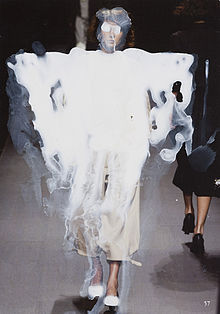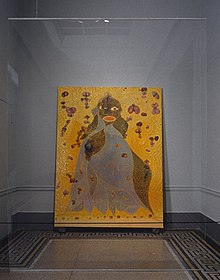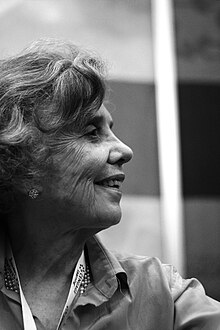
Back فن نسوي Arabic Феминистко изкуство Bulgarian Art feminista Catalan ھونەری فێمینیست CKB Feministische Kunst German Φεμινιστική τέχνη Greek Arte feminista Spanish هنر فمینیستی Persian Feministinen taide Finnish Art féministe French
It has been suggested that this article be merged into Feminist art movement. (Discuss) Proposed since January 2024. |

| Part of a series on |
| Feminism |
|---|
 |
|
|



Feminist art is a category of art associated with the feminist movement of the late 1960s and 1970s. Feminist art highlights the societal and political differences women experience in their lives. The goal of this art form is to bring a positive and understanding change to the world, leading to equality or liberation.[1] Media used range from traditional art forms, such as painting, to more unorthodox methods such as performance art, conceptual art, body art, craftivism, video, film, and fiber art. Feminist art has served as an innovative driving force toward expanding the definition of art by incorporating new media and a new perspective.[2][3]
- ^ "Feminist Art Movement, Artists and Major Works". theartstory.org. Retrieved 4 April 2018.
- ^ Cheris Kramarae; Dale Spender (1 December 2000). Routledge International Encyclopedia of Women: Global Women's Issues and Knowledge. Taylor & Francis. pp. 92–93. ISBN 978-0-415-92088-9.
- ^ "Feminist art movement". The Art Story Foundation. Retrieved 13 January 2014.